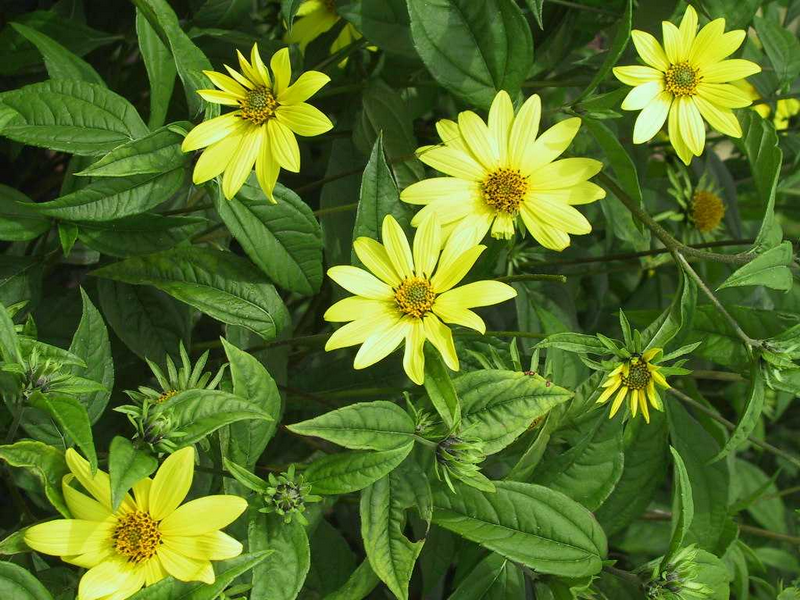Woodland Sunflower
Helianthus microcephalus
Click here to download a PDF of this plant information page (for printing).

Sun Exposure: Full Sun, Part Sun
Season of Interest: Summer, Fall
Bloom Time: August - September
Bloom Color: Yellow
Height: 48 to 72 in.
Spread: 36 in.
Spacing: 40 in.
Water Needs: Average
Maintenance: Very little
Soil Type: Clay, Loam, Sandy
Soil pH: Acidic, Neutral
Soil Drainage: Well drained
Pests: None
Diseases: Powdery mildew
Wildlife: Bees, Butterflies, Birds

Description:
Woodland sunflower is a native perennial wildflower in the aster family found in dry woodland areas or along roadsides in the eastern U.S. The yellow flowers are showy in clusters with a long bloom season. Pollinators are attracted to the blooms and birds will eat the seeds. It spreads by rhizomes and reseeding. This sunflower is easy to grow in average well-drained soils and tolerates moist to occasionally dry soil and full sun to partial shade. It is drought tolerant once established. Deadhead the blooms to stimulate reblooming and prevent unwanted seeding. Divide plants as needed to control growth. This plant is suitable for cottage gardens, naturalized and native gardens and rock gardens. It makes a great nectar plant for a butterfly garden as well. For more information see:
plants.ces.ncsu.edu/plants/helianthus-microcephalus
Care and Growing Tips:
Plant woodland sunflowers in a location where they can enjoy full sun, or at least six hours of direct sunlight each day. Plants that don't get enough sun may have weak stems and may fail to bloom. They prefer well-drained soil and will even tolerate soil that is wet on occasion. While the flowers are drought tolerant and have low water needs, water regularly when you don't get rain for best growth and flowering.
These sunflowers will grow in a variety of soil types and thrive in poor soil. Fertilizer is not required. Due to their height, they are susceptible to breaking or falling over, especially in windy conditions or if the stems are weak from improper care. While not required, you can consider staking the plants or offering them another form of support.